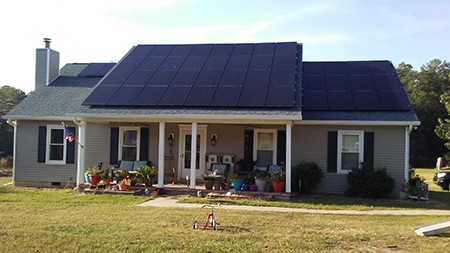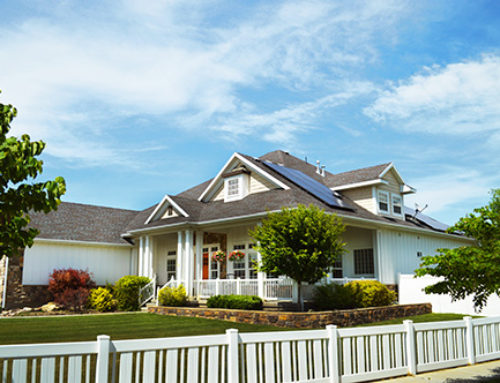Homeowners who are curious about solar energy have plenty of options.

There are numerous online resources for investigating topics related to who the best solar installers are, the ins and outs of residential financing, the cost of typical solar projects, the renovation tax credit, the average kWh cost, and more.
It’s most important to learn how to estimate how much it would cost to put solar panels on your home. Answering this key question requires a look at the average cost of solar panels in various parts of the U.S. and deciding how large of a system you want or need.
Here is the core information that homeowners should have to begin making an informed decision about whether to “go solar” with at least a portion of their home’s energy needs:

U.S. solar panel costs
Solar projects that homeowners undertake in the U.S. have different costs based on where the home is located. The average cost for residential solar projects continues to decrease each year, which means that the 2018 average cost for a home system of $13,188 will likely decrease by 2019. In fact, from 2017 to 2018 the overall average price of residential solar installation in the U.S. dropped by more than six percent.
Depending on where you live in the United States, expect per watt costs to range from $2.71 as a low, up to $3.57 as a high point. That translates to a typical range, for an entire system, of between $11,380 to $14,990. This final price includes the tax credits that homeowners receive for going solar.

State-by-state costs of panels
Solar installers across the U.S. report that prices range above and below the national average of $3.14 per watt based primarily on local market conditions. For example, while Oregon, Colorado, Utah, California, Georgia, South Carolina, and New Hampshire are close to the average, many other geographically unrelated states lie above or below it.
Arizona, Indiana, Ohio, Illinois, Michigan, Nevada, Washington, Florida and Maine are well below the national average for per-watt solar installation costs. On the other hand, Rhode Island, Vermont, Missouri, Iowa, Wisconsin, Minnesota, New Mexico, and Louisiana are well above the national average.

The typical cost of a single solar panel
Pricing for single solar panels can be a bit tricky depending on who buys them, how many they buy, the kind of panel for the project, and how large the system is. For the most part, like thousands of other consumer goods, there are quantity discounts and special prices for repeat wholesale and industrial buyers.
In short, depending whether you want just one or two panels for a small project or will buy through an installers for a large residential system, a single panel will cost between 85 cents and $1.20 per watt. Output on typical panels ranges from 150 up to 350 watts.

Factors that affect solar panel installation costs
There are several factors that affect the final cost of a solar power home, regardless of whether the homeowner is able to take advantage of the renovation tax credit. Residential financing rates can also play a small role because a solar powerhome project is often paid for with bank residential financing, as is the case with many home improvements.
Aside from those relatively minor considerations, electricity installers who put solar systems into homes note that four factors play a major role in the final cost of a solar system. They are the specific characteristics of the house, sales/marketing expenses for the electricity installers, legal/labor expenses, and the equipment.

Potential long-term savings of solar vs conventional energy systems
In a home that uses $2,000 of energy per year, installing a solar system for a total cost of $10,000 (for example) would mean a 5-year payback period and a return on investment of $40,000 over a 25-year time frame. The first five years, during which the homeowner saves $10,000 in energy expenses, is the breakeven period.
From year five until year twenty-five, there’s no energy cost, which means the homeowner saves $2,000 each year by having a solar system in place. The solar ROI for the time period in this example is $40,000 for the life of the solar system (even though most systems last much more than 25 years). Utility-scale solar systems can have much larger ROI figures due to their size.
Purchase incentives based on local market conditions play a role in overall costs and long-term savings as well. It’s always wise to check with local installers for any purchase incentives in your area.

Components of residential solar systems
There’s much more to a residential solar installation than solar cells. In addition to the solar panels and photovoltaic cells ( solar PV cells) themselves, residential systems include the controller, for protecting batteries via a measured electricity flow, batteries for storage of electricity, and an inverter for changing direct current into alternating current (DC to AC).
Solar PV cells are the most visible part of a system. They receive sunlight directly but all the components together are responsible for producing kilowatt hours of electricity. The efficiency of a solar residential system can lead to a lower average kilowatt hour cost than traditional energy sources.

Why Solar Makes Sense
Utility customers who are tired of paying higher and higher costs for energy each year often consider a solar option that comes with a renovation tax credit, a much lower average kWh cost, and kilowatt hours of electricity that come directly from nature.
Utility customers are often curious about the many ways that solar system components work together. That’s why it helps to research the commercial market and do some price comparison on your own before making a purchase. Federal feed in tariff programs have done a lot to assist the solar energy industry, but FIT (feed in tariff) legislation has encountered some opposition from traditional utility companies. Regardless, the future of solar energy, for both residential and commercial use, is bright.

The Future of Solar Power for Homeowners
The world gets only about 1 percent of its power from solar energy today, but many experts believe the potential exists for more than 25 percent of all global energy to come from solar power in the near future. This estimate takes into account both residential and utility-scale solar energy. In the U.S., the Investment Tax Credit for residential solar is winding down and will come to an end by January of 2022.
For homeowners who want to put an efficient solar power system in place, now is a good time. Not only is the tax credit still available, but the sooner a large-scale system is up an running, the sooner a home will get off the traditional utility subscription plan and rack up energy savings. Calculating the solar ROI (return on investment) includes figuring how much energy savings a solar system will deliver.
Still, it’s necessary to do some research about local costs, the unique factors that might impact your own installation expenses, and the potential long-term savings from a home-based solar energy system. The future is exciting for the solar energy industry and for homeowners who decide to break free from traditional utility company monopolies.
